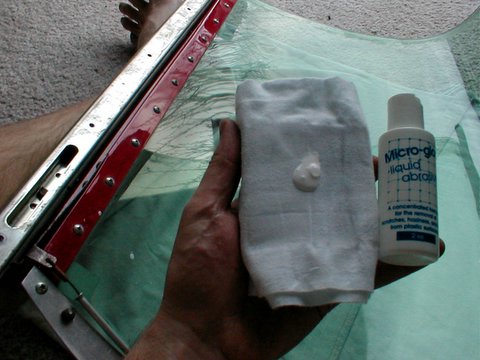The top of my canopy, on the inside, had lots of scratches from contact with the top of my helmet. The photo is contrast-enhanced to show the damage. The first solution to this problem was making an adjustment in the padding under my butt to put me half an inch lower in the seat. The second was to paste a sheet of moleskin on the top of the helmet. Moleskin is padding used by hikers and others for relief from blisters. It has its own adhesive on the back. Find it at your local pharmacy.
Having some remedy to the scratching I was left with the damage in the top of the canopy. The damage wasn't apparent when flying in the Sportsman category. It became a problem flying the Intermediate category. I found myself flying inverted over the box wanting to look directly up (down) through the canopy. The scratches obscured the view.
To the rescue comes a product called Micro-mesh. Aircraft Spruce sells a Micro-mesh abrasive kit that I used to remove the scratches and restore the inside of the canopy to a clear polish. The Aircraft Spruce product number is 09-24700; "Micromesh scrtch rem std kt." The Micro-mesh web site is, www.micro-surface.com. The kit from Aircraft Spruce is the Micro-mesh KR-70 kit. Micro-mesh publishes the instructions for this kit at this link.
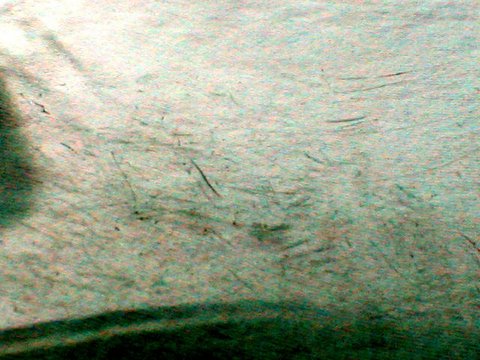
The Micro-mesh standard scratch removal kit comes with a foam sanding block, seven grades of abrasive material ranging from 1500 (coarse) to 6000 (fine), polishing cloth, polish, and instructions.
The scratches on my canopy were deep enough that the 1500 Micro-mesh would not remove them. 400 grade wet-dry abrasive paper from the auto parts or hardware store, used wet, removed the scratches and left an opaque patch in the top of my canopy.
You must work in a single direction only with each grade, alternating directions at right angles with each successive grade. You work at each step until the scratches left in one direction on the previous step are completely replaced with scratches in the new direction on the current step.
If you leave any scratches from a previous step, subsequent steps will not remove them because they are too deep. You can't skip grades, either, for the same reason. Be patient! If you run-out of elbow grease, take a break.
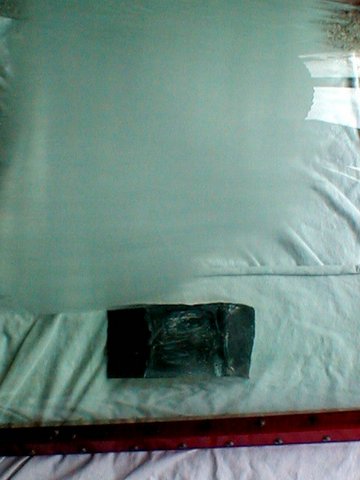
This picture and the one before it show the state of the canopy after the second step, the one with the 1500 grade abrasive, and the third step, with 1800 grade abrasive. It's pretty frightening!
You have to completely cover the damage from the prior step with lighter damage from the current step. That means you will work a larger area with each successive step. In the end you will work the entire canopy. There is no need to damage any more than necessary to remove the damage from the prior step.
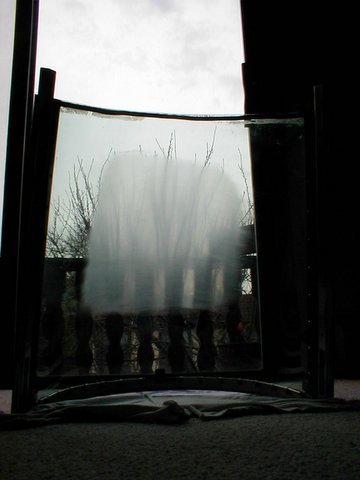
Be sure the outside of the canopy, the work surface under the canopy, and your clothes are clean and free of anything that could scratch. Remove rings and bracelets! Belt buckles, metal buttons or snaps. It's possibly best to do the inside before the outside, if you're doing both. The outside can be polished with the canopy on the plane.
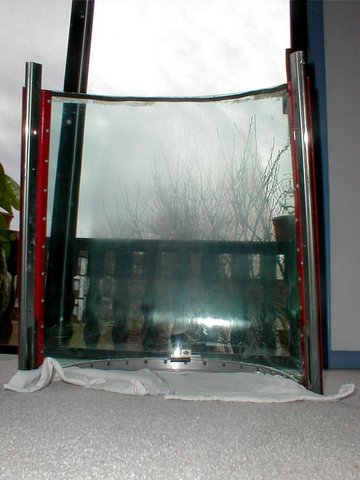
This photo and the one before it show the canopy after the 3600 grade step. The close-up shows that the canopy is unusable, but has hope. The 4000 grade step that followed covered the entire canopy in very fine scratches that no longer show well in a photograph.
Working next to a window with daylight is best because you need to hold-up the canopy to the light and see that every one of your scratches goes in one direction, that all of the opposite-direction scratches are covered.
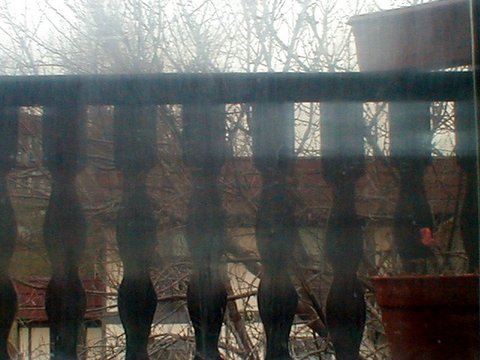
The abrasive Micro-mesh sheets are best used wet. I sprayed the canopy with a spray-bottle to moisten it before working. I sprayed and wiped the canopy using a clean cotton cloth between steps. Working a step with the abrasive leaves a milk-white, thin paste of plastic particles suspended in water.
This is a used Micro-mesh sheet. The sheets in the KR-70 kit are three by six inch rectangles just large enough for hand sanding.
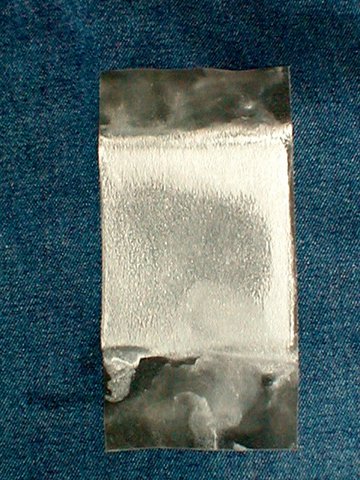
This is a used Micro-mesh sheet after rinsing with tap water. They come clean and may be used many times again.
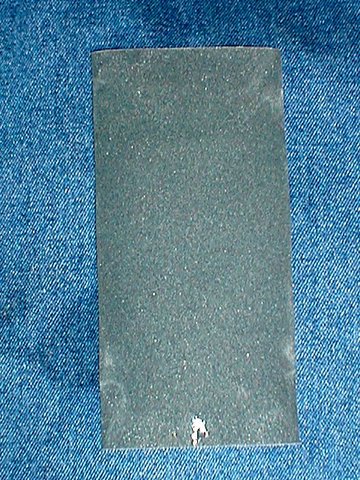
Remember to take your time. Take breaks between steps or even within a step. Have another project going in parallel. The breaks help relieve the monotony of working the abrasive, prevent the disposition to rush a step, and relieve the arms.
This is a photo of the last abrasive step using the 6000 cloth. The cloth is so smooth that it sticks to the canopy. I put a drop of dish soap in the spray bottle to make the canopy surface more slippery. At this point I'm working the entire canopy edge to edge, end to end.
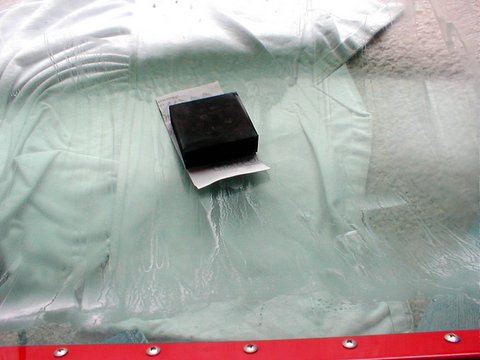
The final step uses an abrasive so fine that it comes in a paste and it's called "polish." Polishing was the most difficult and time-consuming step of all, working one-foot square overlapping areas of the canopy. The result was fantastic!
It took all of a day to repair the inside of the canopy working in shifts. The photo also reveals that, working at home on a carpeted surface one may as well be comfortable! Wear shorts and let the sun shine!
